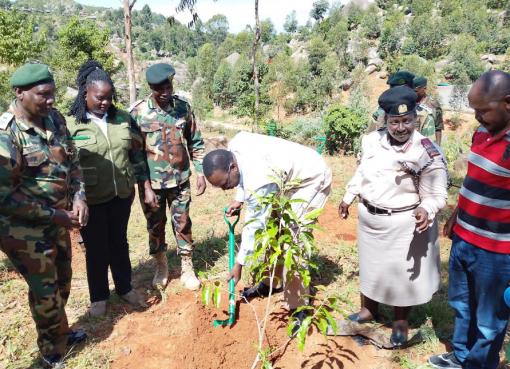Nairobi, Monday, November 27, 2017 KNA by Wangari Ndirangu
Kenya stares at more food losses as the dangerous pest, fall army worm continues to attack short season crop in South Rift, Nyanza, Mt. Kenya and Western region counties, a research organisation has warned.

Senior Research Fellow at Tegemeo Research Institute Dr. Lillian Kirimi has cautioned that the already reported incidences of the destructive pest will lead to almost 100 percent damage to the young crop in counties currently that enjoys two seasons a year.
In a report on the ‘Impact of Fall Army-worm Infestation on the 2017 Maize Crop’, Dr. Kirimi pointed out that damage of the short season crop will adversely affect food security in the country triggering high prices next year.
“The further damage of the crop will also strain on the government as it has to import more food to feed the population,” said Dr. Kirimi.
She explained that the worm has several generations per year and the moth can fly up to 100 km per night, hence its rapid infestation.
“Damage results from leaf-eating and a large pest population can cause defoliation, resulting in yield losses of up to 100 percent; the larvae then migrates to adjacent areas or host plants,” said Dr. Kirimi.
Kevin Onyango another research associate said the recent attack to the crop will compound the situation the country is grappling with currently in terms of food loss.
Onyango noted the country produces an average of 40 million 90kg bags per year against a rising national demand estimated at 45 to 50 million bags annually, with the deficit bridged through imports.
This year, Onyango added the country expects a total of 31.7 million bags of maize, being 29.1 and 2.6 million bags from the long and short rains harvests, respectively.
“The dry spell experienced in May and June provided a conducive environment for the worm to feed, multiply and spread rapidly infesting an estimated 800,000 ha of the long rain maize crop,” said Onyango.
The pest was reported early this year in Busia, Kakamega, Trans Nzoia, Bungoma, Uasin Gishu and Nandi, Kericho, Bomet and Narok in South Rift, as well as Nakuru and Baringo in Central Rift.
Government and other value chain players spent more than Sh.335 million to buy chemicals and spraying devices. “Extension service provision in Kenya must be revitalized, since this is the main avenue through which farmers and other agricultural value-chain actors receive information”, Onyango said.
He added that the country must also formulate and operationalise rapid response strategies to deal with agricultural pest and disease outbreaks that have become frequent in the face of climate change.




